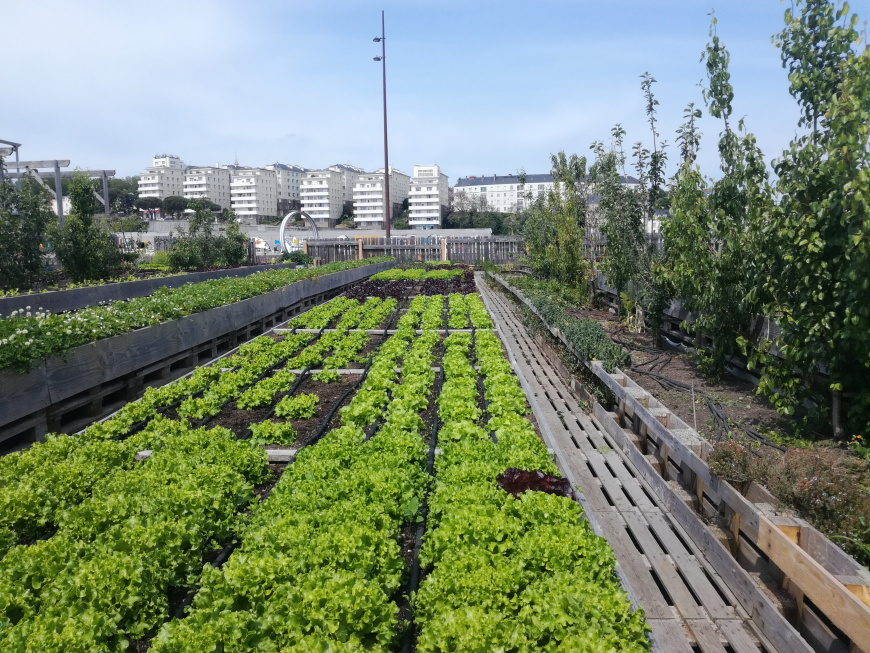The Facts About City Blooming Uncovered
The Facts About City Blooming Uncovered
Blog Article
Excitement About City Blooming
Table of ContentsCity Blooming for BeginnersGetting The City Blooming To Work9 Easy Facts About City Blooming ExplainedCity Blooming for BeginnersAn Unbiased View of City Blooming
Intrigued in growing food for sale in the City of Chicago? Below is a checklist of regularly asked questions concerning the policies and regulations that farmers ought to take into consideration when preparing a metropolitan farming project.
The zoning modification does not customize any type of various other codes handling composting, structure authorizations, purchasing or renting City possessed property, business licenses or ecological contamination. There are existing codes that manage these problems and they stay completely effect and might apply to your project. Community yards are commonly possessed or managed by public entities, civic organizations or community-based companies and preserved by volunteers.
Urban farms grow food that is meant to be marketed, either on a not-for-profit or for-profit basis. Due to their industrial function, city ranches call for a company license.
City Blooming Fundamentals Explained
The quantity of garden compost product can not go beyond 25 cubic backyards at any kind of provided time according to the criteria in 7-28-715 of the City's Municipal Code. Due to the fact that the dirt at a lot of brand-new yard websites needs changing, garden compost, soil, wood chips, or various other materials can be acquired to build or improve the expanding room.

If a structure license is needed after that the hoophouse will be considered an accessory structure. You can figure out even more regarding the structure permit demands by contacting the Department of Buildings. The 25,000-square-foot size limit is meant to stop a solitary neighborhood yard from controling a given block or interfering with the block's existing property or industrial personality.
The restriction does not use to yards located in Public Open Area (POS) districts. Can there be more than one community garden that is 25,000 square feet on a solitary block? Fencing is not called for, nevertheless, yards that have big car park areas might be called for to mount secure fencing or other landscaping functions.
Facts About City Blooming Uncovered
B1 & B2 districts need that all business usage tasks be performed inside. R areas restrict industrial task. The laws mirror the function and intent of the Zoning Code. Is secure fencing required for city ranches? Yes. Fences might be needed, in addition to landscape design and screening, for specific auto parking areas and outside work or storage areas depending on place and the certain activity taking area.
Yes. Urban farms need structure permits and zoning authorizations before building. Various other types of city evaluation might be called for depending on certain structures, activities, dimension, landscaping, licensing, public heath and stormwater administration issues. Many of these requirements are identified in the job design or permitting process, nevertheless, the candidate may be responsible to separately recognize particular licenses or allows that may be required.
The Division of Business Matters and Consumer Security can aid figure Home Page out the particular type of service permit that's needed. Off road vehicle parking is required for most commercial jobs in Chicago. The needed number of vehicle parking spaces is based on the number of staff members working on website and not the square video footage of the growing area.
The Definitive Guide for City Blooming

Yes. An urban farm can market garden compost product produced on site, however, the operation needs to abide with the policies in 7-28-715 of the Chicago Municipal Code. Yes. Aquaponic systems are permitted inside your home on city farms in numerous zoning areas. Nonetheless, a zoning testimonial and building license is called for in order to mount frameworks or systems and an organization certificate is needed as described above.
As much as 5 hives or nests of honey bees may be maintained as an accessory use. Nonetheless, beekeepers need to register with the Illinois Division of Agriculture. To learn more concerning the recommended zoning amendment you may contact the Division of Real Estate and Economic Growth, Bureau of Preparation and Zoning at 312.744.8563.
Farming in cities and urban areas An urban farm in Chicago. Urban agriculture refers to various practices of cultivating. https://www.gaiaonline.com/profiles/cityblooming/46731693/, processing, and dispersing food in urban locations. The term also uses to the location tasks of pet husbandry, aquaculture, beekeeping, and gardening in an urban context. Urban agriculture is differentiated from peri-urban agriculture, which happens in rural areas at the side of residential areas.
Not known Facts About City Blooming
, who look for to form social networks started on a shared ethos of nature and area holism. These networks can establish by way of formal institutional assistance, ending up being incorporated into regional community planning as a "shift community" activity for sustainable metropolitan development.
In either instance, the much more direct accessibility to fresh veggie, fruit, and meat products that may be understood via urban agriculture can enhance food security and food safety while decreasing food miles, leading to reduced greenhouse gas exhausts, thereby adding to climate modification reduction. Several of the first evidence of city agriculture comes from Mesopotamia.
Report this page